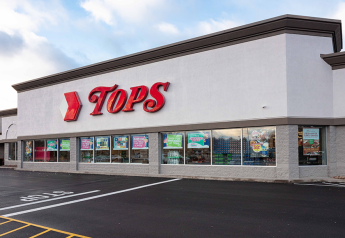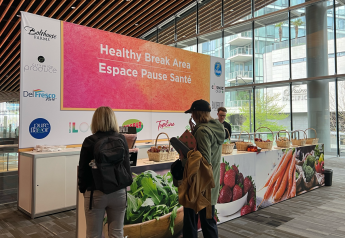Speaker details new ways to cater to consumers

PEBBLE BEACH, Calif. – Some elements of the rapidly evolving retail landscape could be positive for produce, consultant Bill Bishop told California Fresh Fruit Association members March 26.
The changes Bishop described during an education session at the 82nd annual meeting for CFFA included grocers moving toward smaller formats and digital media gaining influence over purchases. The firm Bishop founded, Brick Meets Click, specializes in the convergence of physical retail and e-commerce.
As he explained it, online grocery does not have to render physical stores obsolete to change the way people shop. Because people can easily shop online for nonperishable staples, that channel could replace the traditional stock-up trip to the store. However, since many people still want to pick their own produce and meat, stores will need to focus on quality in those departments to draw foot traffic. That dynamic would give retailers greater incentive to better handle stone fruit and other produce.
Moreover, Bishop said that while online sales account for about 5% of grocery, 50% of purchases are influenced by digital. Grower-shippers can use popular social media platforms like Facebook, Instagram, Pinterest, Twitter and others to reach consumers in the places they already frequent, but a key to the equation will be communicating what attributes the products have that shoppers are already seeking.
Bishop gave the example of the Raley’s Shelf Guide, which uses colors and letters to quickly tell consumers if an item is minimally processed, nutrient-dense, without added sugar, non-GMO, gluten-free, organic, vegan or kosher. With that system, shoppers do not need to look at packaging or labels.
People using the Raley’s website can also use those traits as filters when they shop online. Bishop said developing product descriptions and other material around such attributes will be key.
“If you don’t have the content, you can’t really communicate online as effectively as you need to,” Bishop said. “The content ought to involve a picture … and enough product characteristics to be able to sort and search, so this is a new set of data besides case pack and shrink and all these things. You’re going to start with a whole new set of requirements for data to be active in the digital world.”
Bishop said people typically shop online to replenish or discover and observed that grocers have generally facilitated the former but not the latter. One concern retailers have had about online is that it reduces or eliminates browsing, but Bishop noted that some software can already pick up the slack.
“At certain junctures, it’ll be suggested to them … here’s a new meal, just buy one more thing, because we know what you bought and we know what you have in the basket right now,” Bishop said. “So not only are people building meal kits intentionally before the fact, ironically, they’re kind of being built in a dynamic (way). To me, that’s pretty cool.
“I personally feel that we’re just going to see more and more of this, and then the question becomes, how do you get on that – figuratively speaking – bus so that your product is part of what the total purchase is?” Bishop said.
Retailers have sought to help shoppers put together meals in previous years as well, but e-commerce could allow them to do so in new ways.
“The big restriction on solutions prior was physical merchandising,” Bishop said. “The protein guys wouldn’t allow their stuff to go in the produce department, the produce people were a little reluctant – with the exception of bananas, to hang them in front of the cereal department … but when you start getting in this virtual environment, all of those kind of degrees of freedom open up for you.”
In a nutshell, producers have to provide information shoppers want along with their commodities. Bishop cited the advent of retail dietitians as another example.
“It gives you an indication that delivering this information has economic value,” Bishop said.







